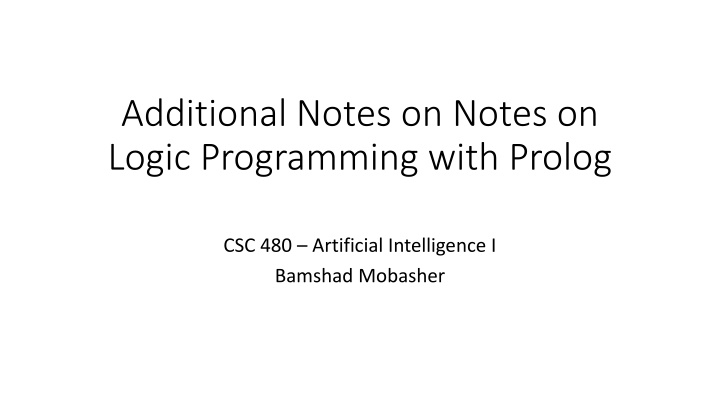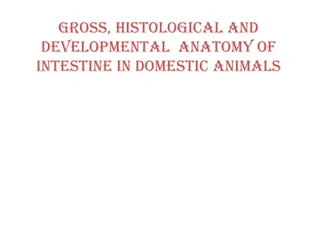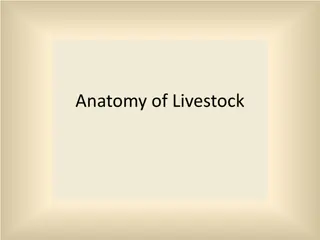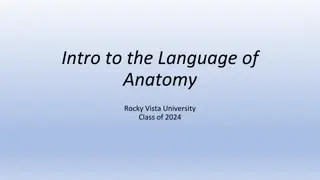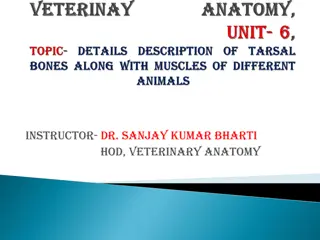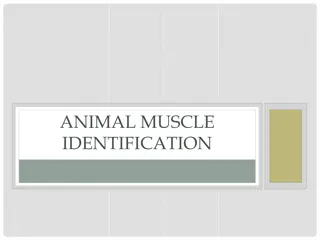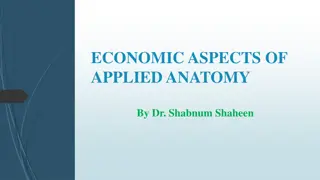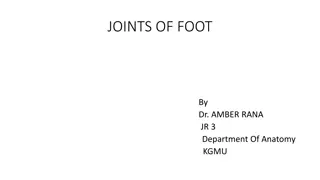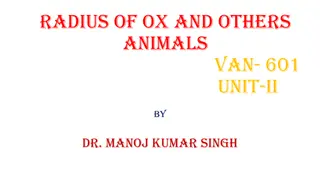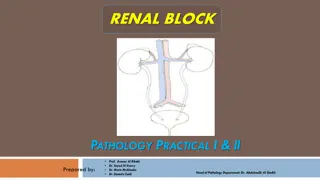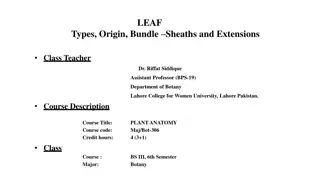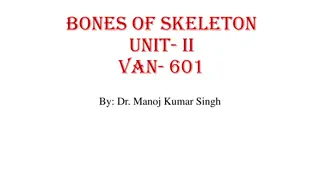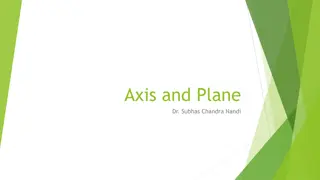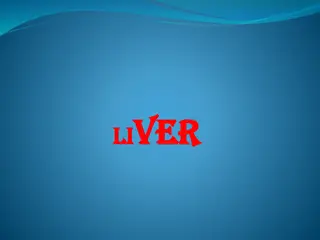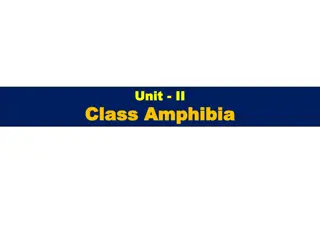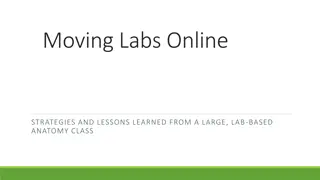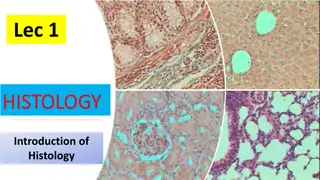Anatomy Studies: Structure of the Body
Anatomy studies the structure of the human body, covering systems and organs. Explore different learning resources ranging from textbooks to specialist journals. Understand the importance of sourcing books based on your learning level and knowledge. Discover the significance of various types of books in enhancing your anatomical knowledge.
Download Presentation

Please find below an Image/Link to download the presentation.
The content on the website is provided AS IS for your information and personal use only. It may not be sold, licensed, or shared on other websites without obtaining consent from the author.If you encounter any issues during the download, it is possible that the publisher has removed the file from their server.
You are allowed to download the files provided on this website for personal or commercial use, subject to the condition that they are used lawfully. All files are the property of their respective owners.
The content on the website is provided AS IS for your information and personal use only. It may not be sold, licensed, or shared on other websites without obtaining consent from the author.
E N D
Presentation Transcript
Additional Notes on Notes on Logic Programming with Prolog CSC 480 Artificial Intelligence I Bamshad Mobasher
Prolog = Programming in Logic Declarative (not procedural) Recursion (no for or while loops) Relations (not functions & procedures) Unification as the main method for message passing Think declaratively, not procedurally Challenging Requires a different mindset High-level language Not as efficient as, say, C Good for rapid prototyping Small programs Useful in many AI applications (knowledge representation, inference) Extensions, like PSL (Probabilistic Soft Logic) are highly scalable and used extensively in machine learning For more information about the basic syntax and structure of Prolog programs please review the first few sections of the online tutorial Learning Prolog Now
Prolog = Programming in Logic Basic Idea Describe the situation of interest (specification for a task to be performed, knowledge about the environment, etc.) In the form of logical statements Ask a question (issue a query) Prolog logically deduces new facts about the situation we described Gives us its deductions back as answers to the query Prolog s computational model based on Backward Chaining Inferences from Horn Clause programs equivalent to Resolution-Refutation with Horn Clauses For more information about Prolog s computational model, please review my Notes on Logic Programing & Prolog.
A bit of Prolog History First Interpreters and Compilers in 1970s Used extensively in early work on NLP and knowledge representation in 1980 s and 1990 s Also used in many high profile DoD and NASA projects in 80s, 90s, and 2000s E.g., Prolog used to program natural language interface in International Space More recently, Prolog (and it s extensions) are used to develop components of intelligent systems that require reasoning in addition to machine learning E.g., Parts of IBM s Watson QA supercomputer were coded in Prolog
FOPC to Prolog Ancestor Example x y [father(x,y) \/ mother(x,y) parent(x,y)] x y [ z [parent(x,z) /\ parent(z,y)] grand(x,y)] x y [parent(x,y) ancestor(x,y)] x y [ z [parent(x,z) /\ ancestor(z,y)] ancestor(x,y)] mother(ann, bob) father(joe, bob) father(bob, cole) father(cole, ellen) mother(jan, ellen) mother(ellen, dan)
CONJUNCTIVE NORMAL FORM - REVISITED Any first-order logic KB can be converted into CNF: 1. Replace P Q with P Q 2. Move inward the negation symbol, e.g., xP becomes x P 3. Standardize variables apart, e.g., xP xQbecomes xP yQ 4. Move quantifiers left in order, e.g., xP yQbecomes x y (P Q) 5. Eliminate by Skolemization (see later slide) 6. Drop universal quantifiers (we ll assume they are implicit) 7. Distribute over , e.g., (P Q) R becomes (P Q) (P R) 8. Split conjunctions (into a set of clauses) and rename variables to avoid conflicts
Conversion to Horn Clause Form x y [father(x,y) \/ mother(x,y) parent(x,y)] x y [~(father(x,y) \/ mother(x,y)) \/ parent(x,y)] x y [(~father(x,y) /\ ~mother(x,y)) \/ parent(x,y)] x y [(~father(x,y) \/ parent(x,y)) /\ (~mother(x,y) \/ parent(x,y)] (~father(x,y) \/ parent(x,y)) /\ (~mother(x,y) \/ parent(x,y)) This translates into two Horn clauses: ~father(x,y) \/ parent(x,y)) and ~mother(x,y) \/ parent(x,y) Or in implication form: father(x,y) parent(x,y) and mother(x,y) parent(x,y) In Prolog, these will be represented as two statements: Note the backwards implication form in Prolog. Variables in Prolog must always begin with upper-case letters. Statements are assumed to be universally quantified. Each statement must end with . . parent(X,Y) :- father(X,Y). parent(X,Y) :- mother(X,Y).
Conversion to Horn Clause Form x y [ z [parent(x,z) /\ parent(z,y)] grand(x,y)] x y [~ z [(parent(x,z) /\ parent(z,y)] \/ grand(x,y)] x y z ~[parent(x,z) /\ parent(z,y)] \/ grand(x,y)] x y z [~parent(x,z) \/ ~parent(z,y) \/ grand(x,y)] ~parent(x,z) \/ ~parent(z,y) \/ grand(x,y) This a single Horn clause that can be converted into the implication form parent(x,z) /\ parent(z,y) grand(x,y) In Prolog, this will be written as a rule: Note the backwards implication form in Prolog. Also, the , in the body of the rule (the right-hand-side) means conjunction. grand(X,Y) :- parent(X,Z), parent(Z,Y).
FOPC to Prolog Ancestor Example x y [parent(x,y) ancestor(x,y)] x y [ z [parent(x,z) /\ ancestor(z,y)] ancestor(x,y)] The above two rules represent the definition of what it means to be an ancestor . Without explicitly converting into clause form, let s write these as Prolog statements: ancestor(X,Y) :- parent(X,Y). ancestor(X,Y) :- parent(X,Z), ancestor(Z,Y). This is an example of a recursive rule. Note that Prolog executes the subgoals in the rule body in a top- down and left-to-right manner (depth-first-search). So, care must be taken to make sure it doesn t get into infinite recursion.
Ancestor Example - full prolog program mother(ann, bob). father(joe, bob). father(bob, cole). father(cole, ellen). mother(jan, ellen). mother(ellen, dan). Predicates with no variables (only constants here) are ground atoms; in Prolog they are called facts . The (reverse) implication statements are rules with the left-had-side of :- called the head of the rules and the right-hand-side called the body of the rule. parent(X,Y) :- father(X,Y). parent(X,Y) :- mother(X,Y). grand(X,Y) :- parent(X,Z), parent(Z,Y). ancestor(X,Y) :- parent(X,Y). ancestor(X,Y) :- parent(X,Z), ancestor(Z,Y).
Queries in Prolog Prolog programs are executed by issuing queries Prolog uses backward chaining to determine if the query statement is entailed from the knowledgebase. In the process, if the query has variables, it tries to provides answers for the variables through appropriate substitutions. If there are several possible answers (because of alternative branches in the proof tree), we can force backtracking by issuing a ; after each answer so that Prolog follows the alternative branch and provide additional answers. If the query has no variables, Prolog will return either a yes or no . In most Prolog interpreters queries are preceded with ?- .
Queries in Prolog ?- mother(ann, bob). Answer: yes or true ?- mother(jan, bob). Answer: no or false ?- parent(X, bob). X = joe; X = ann; ?- ancestor(X, ellen). X = cole; X = jan; X = joe; X = bob; X = ann ?- ancestor(bob, X). X = cole; X = ellen; X = dan mother(ann, bob). mother(jan, ellen). mother(ellen, dan). father(joe, bob). father(bob, cole). father(cole, ellen). parent(X,Y) :- father(X,Y). parent(X,Y) :- mother(X,Y). grand(X,Y) :- parent(X,Z), parent(Z,Y). ancestor(X,Y) :- parent(X,Y). ancestor(X,Y) :- parent(X,Z), ancestor(Z,Y). Let s try these in the Swish SWI-Prolog online interpreter
Lists in Prolog Lists are the primary built-in data structures in Prolog Represented with square brackets: [], [1,2,3], [a, [1,3,b], [bob, mary]] The vertical bar symbol, | , acts both as the constructor and selector for lists [H|T] represents a list whose head element is H, and whose tail (i.e. the rest of the list) is T [a, b, c] H = a and T = [b, c] [[1,2], [3,4], b, c] H = [1,2] and T = [[3,4], b, c] [a] H = a, T = []
Lists in Prolog Example: Appending a list to anther list First statement says that if we append a List to the empty list, we get back the List. This is also the base condition for the recursion. append([],List,List). append([H|Tail], X, [H|NewTail]) :- append(Tail, X, NewTail). The 2nd statement says that if we append a list X to a list with head H and tail T, we get a new list with head H and a tail which is the result of append X to tail of the original list. An alternative version of the 2nd statement: append([H|Tail], X, NewList) :- append(Tail, X, NewTail), NewList = [H|NewTail].
Arithmetic in Prolog Prolog has special built-in features for dealing arithmetic and numeric operations: factorial(0, 1). factorial(N, F) :- N > 0, ?- factorial(10, X). X = 3628800 N1 is N - 1, factorial(N1, F1), F is N * F1. add2list([], _, []). add2list([H|T], N, L) :- Hplus is H + N, add2list(T, N, Tplus), L = [Hplus|Tplus]. ?- add2list([1,2,3], 5, L). L = [6, 7, 8]
